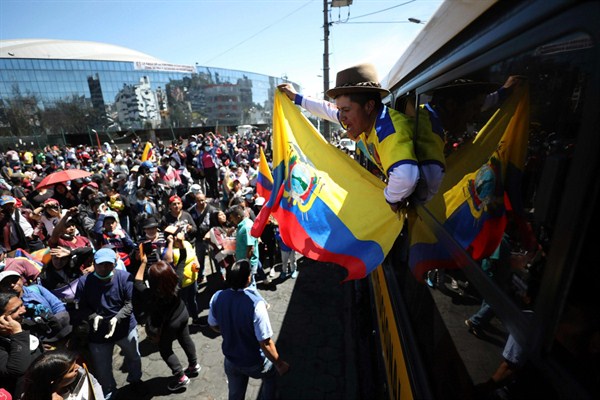After nearly two weeks of paralyzing and deadly protests in Ecuador, the streets of Quito rang out in celebration Sunday night. The demonstrations, led by indigenous groups, had succeeded in pressuring President Lenin Moreno to reinstate a popular fuel subsidy he had removed on Oct. 2 as part of an austerity package backed by the International Monetary Fund. “Victory for the popular struggle!” wrote Jaime Vargas, the head of the country’s largest indigenous coalition, the Confederation of Indigenous Nationalities of Ecuador, or CONAIE, on Twitter.
Moreno said the subsidy cuts were necessary under the requirements of a $4.2 billion loan agreement with the IMF struck earlier this year. The removal of the fuel subsidy immediately raised the price of gasoline by over 30 percent and more than doubled the price of diesel. By ending the subsidy, the government had hoped to save about $1.5 billion a year. It is part of an austerity drive that also includes a 20 percent wage cut for new government workers. To offset some of the impact, the government would also expand the number of Ecuadorians who are eligible to receive $15 per month in public assistance.
Ecuador’s economy is struggling. It faces $64 billion in debt, equivalent to more than half of its GDP, and a $10 billion annual budget deficit. The prospects for economic growth look dim. Still, some experts dispute whether it’s really an acute crisis. “There were difficulties, but it was manageable,” Timm Schutzhofer, an expert on Ecuador from Kassel University in Germany, said in an interview.

